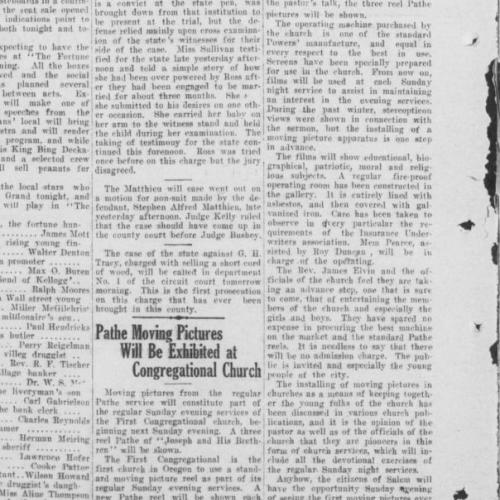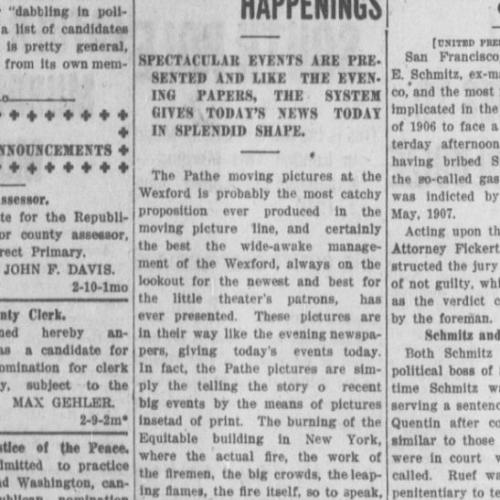Pathé Pictures was a production and distribution company that played films in theaters across Oregon between 1912 and 1917. Indeed, most of Pathé’s business revolved around circulating their reels from theater to theater and city to city via regional film exchanges. Some pictures they would produce themselves, or in collaboration with other minor production companies, but most were reels they purchased themselves and would then rent out to theaters for a week or more, seemingly dependent on audience attendance or other contractual engagements.
An article from the Rouge River Courier illustrates the contentious nature of early film industry arrangements in small-town Oregon, and how difficult securing films could be for these smaller theaters.
Pathé did not limit its scope to theaters, however. In 1916, Pathe made an agreement with a local church in Salem Oregon, First Congregational Church. An advertisement in the guise of an article in the Daily Capitol Journal tells the story of, “the first moving pictures ever shown in the state as a part of the regular church services.”
First Congressional Church considered themselves to be pioneers, specifically seeking to bolster the the numbers of their evening services with more young people, so they turn to cinema. It is a great tactic in all fairness. Instead of spending anywhere from a nickel to a dollar at a theater, why not simply go to the church which is offering to screen films for free? All you have to do is attend a church service, and at this time there was a good chance you were planning on going to church anyway.
Sure, you wouldn’t be watching Pathé’s more famous serials, mostly thrilling mystery stories. Rather, you would be watching something out of the bible, like the short film Joseph and His Brethren. The church purchased an “operating machine” from a company seemingly called “Powers”. The article assures its reader that these projectors are the best quality available, and that the screens were installed properly so that films can be integrated into the evening services, in the hopes of maintaining interest in evening services. I imagine their evening services were packed wall to wall, standing room only.
(Rogue River Courier, October 18, 1915, DAILY EDITION, Page 4)

